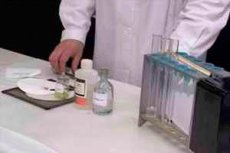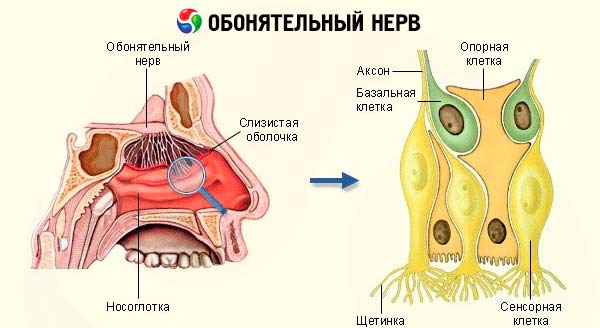Medical expert of the article
New publications
Examination of cranial nerves. Pair I: olfactory nerve (n. olfactorius)
Last reviewed: 07.07.2025

All iLive content is medically reviewed or fact checked to ensure as much factual accuracy as possible.
We have strict sourcing guidelines and only link to reputable media sites, academic research institutions and, whenever possible, medically peer reviewed studies. Note that the numbers in parentheses ([1], [2], etc.) are clickable links to these studies.
If you feel that any of our content is inaccurate, out-of-date, or otherwise questionable, please select it and press Ctrl + Enter.

The function of the olfactory nerve: (perception of smells) is provided by several neurons from the nasal mucosa to the hippocampus.
Olfaction is tested both in the presence of complaints about impaired perception of smells, and without them, since often the patient himself does not realize that he has olfactory disorders, but complains of taste disorders (full taste sensations are possible only if the perception of food aromas is preserved), as well as if there is a suspicion of a pathological process in the area of the bottom of the anterior cranial fossa.

How is olfactory testing performed?
To test the sense of smell, they find out whether the patient can distinguish known smells - coffee, tobacco, soup, vanilla: they ask him to close his eyes and identify the smell of a substance that is brought to the right and left nostrils in turn (the second nostril should be clamped with the index finger of the hand). Substances with a strong smell (for example, ammonia) cannot be used, since they irritate the receptors of not so much the olfactory nerve as the trigeminal nerve. The ability to distinguish smells in healthy people varies greatly, so when testing, it is more important not whether the patient was able to identify a certain substance by smell, but whether he noticed the presence of a smell at all.
Evaluation of results
Unilateral loss of smell is of particular clinical importance if it cannot be explained by pathology of the nasal cavity. Unilateral anosmia is more typical for neurological diseases than bilateral. Unilateral or bilateral anosmia is a classic sign of olfactory fossa meningioma. It is also characteristic of other tumors located in the cranial fossa. Anosmia can be a consequence of traumatic brain injury. Bilateral anosmia most often occurs in the cold, this is especially typical for elderly people.


 [
[